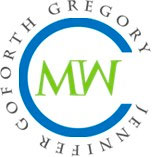How to raise your rates with existing clients

You’ve been working with a client for a while. They are great to work with, and you want the relationship to continue. But back when you started working with them, your rates were a lot lower. Now your other clients pay you more, maybe even a lot more. You can’t afford to keep working with the lower paying client at those rates but you don’t want to let them go.
Or perhaps you negotiated a rate with the client and then realized that the work takes a lot more time than you thought. Perhaps there was some unexpected hoops to jump through in the project—hard-to-find sources, heavy revisions, or an ever-changing scope. Regardless of the reason, the hourly rate you are earning is less than your target. (For the record, I recommend that writers aim for at least an hourly rate of $100 an hour buried in a project rate. I’m not talking about charging by the hour, but a flat project rate.)
In either case, you need to raise your rates. Many writers use the beginning of the year as an opportunity for new rates since this is a model that businesses are used to working within. Other vendors likely raise their rates at this time and they may even raise their own rates with their customers on January 1st. Now is a great time to let your clients know about your new rates.
The first time I did this, I stressed myself out majorly and decided if I did it, all my clients would fire me and I would never work again. (My struggles with impostor syndrome are well documented.) But of course, that didn’t happen. And several times, my client actually responded that they had been meaning to give me a raise. Remember: the worst they can say is no. And then you either keep the client at the current rate or let the client go. The trick is taking emotion out of this and look at it as a business decision, which it is.
3 Steps to Figuring Out Your New Rate
If you are stuck as to what to charge for your new rates, you are not alone. Pricing sends most writers (myself included) into a cold sweat. Instead of basing it on fear or gut, you should turn to math. Yes, I hate math also, but it works for this. And then you have the confidence to raise your rates to where they should be.
- Determine your currently hourly rate with the client. Don’t guess. Don’t go by gut feel. But actually clock how long the work you are currently doing for the client takes you on average. Divide the price by the time it takes you. Then you’ll have the hourly rate you are earning. Let’s say you are charging $300 for a 500 to 600 word blog post with no interviews that takes you an average of 2 hours to finish. You are earning an hourly rate of $150.
- Determine what hourly rate you should be earning. If you try to jump from $25 an hour to $100 an hour, the client is going to say no. So, you have to use a stair step approach. If you are currently earning $50 an hour, then raise your rates so you are earning $60 to $65 an hour. An increase of 20 percent is often a good place to land.
- Determine the project rate you need to earn your new target hourly rate. If you are earning $50 an hour (e.g. a blog post paying $150 that takes you 3 hours to write) and you want to earn a target of $60 an hour, then your new project rate per blog post would be $180. While this may not seem like a huge difference, it adds up over time. If you write 2 blog posts a week at the higher rate, the $30 adds up to $3,120 over the course of a year.
Yes, you have to look at the numbers and see if your client is likely to pay the new rates. For example, a client paying $150 for a blog post is unlikely to agree to $300 a blog post ($75 an hour if it takes you 3 hours). In many cases (okay, most cases), you have to find new clients when you are moving up from a fairly low rate and you want to get to $100 an hour.
If your rates have increased considerably and you only want to keep the client if they are going to pay your current rates, then don’t be afraid to go big. You are likely going to drop the client anyway, so as long as you are professional, it is totally okay and I promise they aren’t going to smear your name on social media. It’s worth a shot, because every now and then, they will say yes to a big jump. It’s happened to me and it’s happened to my friends. It’s always okay to ask.
Two Templates to Use When Raising Your Rates
So, the next step is telling your client. And maybe it’s just me, but this part always feels super scary. Try not to overthink it. Just write the email and press send. Remember this is a business and you are a business owner. Keep the business owner mindset.
I have two different approaches to how I tell my client that I’m raising my rates, and it depends on the reasons for the increase as well as my relationship with the client.
If my rates are simply too low based on my current experience or expertise, then I take the short, sweet, no explanation needed approach. You don’t have to give a reason. As writers we want to explain, but it’s not necessary in most cases.
Hi Steve,
I hope you had a nice time on vacation last week—I’m jealous. I have really enjoyed working with your agency over the past three years and hope to continue for a long time to come.
I wanted to let you know that I am raising my rates starting January 1, 2019. I will be charging $50 more per blog post, so your monthly fee for the four posts will be $1600. Let me know if you have any questions or want to chat on the phone.
Jennifer
That said, sometimes it is okay and even important to explain your reasons. I think that this is especially true if they are a relatively new client and the work takes longer than you expected because the project is more involved.
Hi Sarah,
Hope you had a nice weekend. I have really been enjoying working with you on the company blog and am looking forward to also working with you on the case studies in the future.
When I set my rates for blog posts, it was based on the posts being approximately 600 words and using internal sources. As you know, the posts are closer to 1000 words due to the amount of information that your team wants included in the posts. Because I am now responsible for finding external sources, the time required to do the project has increased.
Due to these changes, my rate for the blog post will be $300 instead of $225 starting on January 1st, 2019. Let me know if you have any questions or want to chat on the phone.
Jennifer
I think this email is the best practice, and stating instead of asking is the right business move. However, with some client relationships that doesn’t feel right. Especially if I don’t want to lose the client if they don’t want to pay the higher rate, I just would RATHER make more money. In that case, I replace the last paragraph above with something like this:
Based on the increased work for each post, would it be in your budget to raise the rate per post to $300?
I will admit that I have even followed that sentence with something wimpy like “If not, that’s okay. I just thought I would ask.” I don’t recommend that approach, but if its the only way you can get up the courage to asking, then its better than nothing.
Now is the time to start thinking about 2019. Not December, not January, but today. Find an hour and look at your current clients to see whose rates need to be increased. Then hit the send button and don’t look back. Your future self will thank you.
How do you raise your rates? What has your experience been? What tips can you share?


This is great! And you made me laugh out loud with your “I have even followed that sentence with something wimpy like…” Ha, ha!
I just did this for the first time. Asked a client if they had any “wiggle room” in their rate. (I’ve been writing for them for a while and hadn’t ever asked for an increase because I’m a big ‘ol chicken.) And they responded back that since I’ve done such a good job for them in the past, they were happy to offer me $50 more per post. :o)
HI –
I am not in the full-on writing business, but I do writing for my major client as well as a million other business ops tasks (she is a coach and a speaker). When I began working with her, I offered a lower rate which was (for me) a major slash but I did it so that I could work with her. It has been a great experience, but the time came after almost 8 months to ask for a raise. Which I did. For a client who ALWAYS coaches her clients to ask for their value and raise their rates.
She signed off on the rate raise – and then promptly told me that because her needs are increasing, she is going to “offshore” the tasks I do for her, and would I be available to help train the new person? Ummmm – no. This would be like one of her clients saying “Hey I know I am going to have major coaching needs next year, and even though you have been a great coach and really helped me in my business, I can’t afford your rates. I am moving to a cheaper coach but I need for you to share with that coach all that you have done for me so that we can get off to a good start.”
I was on a planned vacation when I got the email from her. Yep, an email not a call. No opportunity for any negotiation, and during our conversation about the increase she never mentioned that she could not or would not pay it. My positive “glass half full” attitude demands that I look at this as opening up a space in my schedule for a new amazing higher paying client, but I have to say I was surprised. Yes there is always a risk in raising your rates, but I know that I should not continue to be underpaid. It’s tough, but it is business.